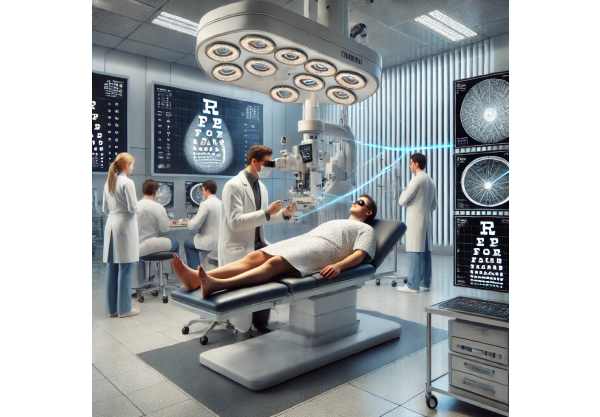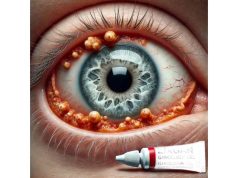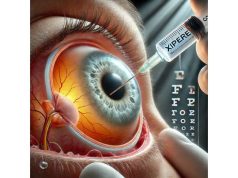
Bilateral diffuse uveal melanocytic proliferation (BDUMP) is a rare, vision-threatening ocular paraneoplastic syndrome characterized by a rapid, painless decline in vision and the proliferation of melanocytes throughout the uveal tract in both eyes. BDUMP is almost always associated with underlying systemic malignancy—most often gynecological, genitourinary, or lung cancers—and serves as an important indicator of an undiagnosed or progressing cancer. The condition is challenging for both patients and clinicians due to its aggressive progression, diagnostic complexity, and limited therapeutic options. This guide provides a comprehensive overview of BDUMP’s clinical presentation, diagnostic approach, current management, surgical and innovative interventions, and what the future holds for affected individuals.
Table of Contents
- Overview, Epidemiology, and Key Characteristics
- Established Non-Surgical Therapies and Pharmacology
- Surgical and Interventional Approaches
- Emerging Innovations and Technological Advances
- Ongoing Clinical Studies and the Road Ahead
- Frequently Asked Questions
Overview, Epidemiology, and Key Characteristics
Bilateral diffuse uveal melanocytic proliferation is a paraneoplastic syndrome—meaning it is triggered by factors related to cancer elsewhere in the body, rather than a primary disease of the eye. BDUMP’s hallmark features include the bilateral, rapid proliferation of melanocytes in the iris, ciliary body, and choroid. As these cells multiply, they disrupt normal eye function, leading to progressive, often severe vision loss.
Defining Features and Symptoms:
- Acute or subacute, painless, and symmetrical loss of vision in both eyes
- Multiple, round, red patches at the level of the retinal pigment epithelium (RPE), best seen on fundus examination
- Diffuse thickening of the uveal tract (iris, ciliary body, and choroid)
- Development of rapidly progressing cataracts
- Exudative retinal detachments (fluid beneath the retina)
- Loss of iris detail and abnormal pupillary reactions
Pathophysiology:
- Thought to be an autoimmune reaction: the body produces antibodies or growth factors in response to a distant malignancy, which then stimulate the proliferation of melanocytes in the uvea.
- Key factor: Hepatocyte growth factor (HGF) and anti-retinal antibodies have been implicated in some cases.
Epidemiology:
- Exceptionally rare; several dozen well-documented cases worldwide.
- Most commonly associated with underlying malignancy, particularly:
- Gynecological cancers (ovarian, uterine)
- Genitourinary cancers (prostate, bladder)
- Lung carcinoma
- Gastrointestinal tumors
Risk Factors:
- Underlying malignancy, often with advanced or metastatic disease
- Slight female predominance due to gynecological association
- Older age groups most commonly affected
Diagnosis:
- Detailed history and systemic cancer screening is essential.
- Ophthalmic imaging: Fundus photography, OCT, fluorescein angiography, and ultrasound.
- Laboratory workup: Paraneoplastic antibody panels may be helpful but are not diagnostic.
Practical Advice:
- BDUMP can precede cancer diagnosis, so urgent and comprehensive systemic evaluation is critical.
- Early recognition and multidisciplinary care can optimize outcomes.
Established Non-Surgical Therapies and Pharmacology
There is no universally effective treatment for BDUMP, but a variety of non-surgical therapies aim to control the ocular manifestations, reduce vision loss, and, crucially, treat the underlying malignancy.
Primary Approach: Treat the Underlying Cancer
- Management of BDUMP must include aggressive investigation and treatment of the primary malignancy.
- Tumor removal, chemotherapy, or radiotherapy may halt or even reverse ocular symptoms in some cases.
Immunosuppressive Therapy
- Corticosteroids (oral, intravenous, periocular, or intraocular) have been tried with limited success.
- Systemic immunosuppression (azathioprine, mycophenolate mofetil, or methotrexate) is rarely beneficial but may be attempted in selected cases.
Plasmapheresis (Therapeutic Plasma Exchange)
- Plasmapheresis removes circulating antibodies and has shown some benefit in reducing vision loss or halting progression, especially when initiated early.
IVIG (Intravenous Immunoglobulin)
- Used with or without plasmapheresis, IVIG can help modulate immune responses and has demonstrated positive results in isolated reports.
Topical and Systemic Medications
- Topical corticosteroids for anterior segment inflammation.
- Carbonic anhydrase inhibitors and oral diuretics to reduce subretinal fluid.
- Supportive use of mydriatics or cycloplegics to relieve discomfort.
Low Vision Support and Rehabilitation
- Early involvement of low vision specialists can help maximize functional vision and maintain independence.
- Visual aids, orientation and mobility training, and occupational therapy support daily living.
Practical Advice:
- If you or a loved one is affected, connect with a multidisciplinary team—including oncology, ophthalmology, and vision rehab—for holistic care.
- Keep a detailed symptom diary to track progression and treatment effects.
Surgical and Interventional Approaches
In BDUMP, surgery is typically reserved for managing complications, as direct intervention on the uveal proliferation is not possible.
Cataract Surgery
- BDUMP often causes rapidly developing cataracts that can further impair vision.
- Cataract extraction with intraocular lens implantation can restore some vision but must be undertaken with caution due to the fragile ocular state.
- Preoperative planning with retina and oncology teams is vital.
Management of Retinal Detachment
- Exudative (serous) retinal detachments may develop and can threaten vision.
- Treatment options include:
- Observation for spontaneous resolution if underlying cancer is treated
- Pars plana vitrectomy with subretinal fluid drainage in selected cases
Ocular Surface Procedures
- Occasionally, BDUMP may be associated with ocular surface complications requiring minor interventions for comfort and vision preservation.
Intravitreal Therapies
- Anti-VEGF injections or intravitreal corticosteroids for associated macular edema or exudation, though responses are generally modest.
Surgical Risks and Considerations
- The eyes in BDUMP are often highly inflamed and fragile; any surgery carries increased risk for complications.
- Surgery may be contraindicated in some advanced cases or when systemic prognosis is poor.
Practical Advice:
- Ensure thorough counseling before any eye surgery, and involve a team familiar with complex ocular and systemic disease.
- Discuss realistic expectations—surgical outcomes in BDUMP are often limited by ongoing paraneoplastic activity.
Emerging Innovations and Technological Advances
While BDUMP remains a challenging condition with no standard therapy, several promising developments are on the horizon.
Advances in Paraneoplastic Diagnostics
- Identification of novel autoantibodies and growth factors involved in BDUMP may allow earlier diagnosis and targeted intervention.
- Use of multiplex serological assays and personalized cancer screening protocols.
Targeted Molecular and Immunotherapies
- Research into monoclonal antibody therapies and immune checkpoint inhibitors for treating both the underlying malignancy and paraneoplastic phenomena.
- Small molecule inhibitors designed to block melanocytic proliferation pathways are under investigation.
Gene Expression and Biomarker Profiling
- Next-generation sequencing and transcriptome analysis to detect unique BDUMP-related signatures.
- Biomarker-guided treatment could lead to more precise therapies.
Advanced Ocular Imaging
- Ultra-widefield imaging, adaptive optics, and enhanced depth imaging-OCT facilitate earlier and more accurate detection of BDUMP changes.
Telemedicine and Remote Monitoring
- Virtual consultations allow earlier detection of vision changes in high-risk cancer patients and foster closer follow-up.
Artificial Intelligence and Predictive Analytics
- Machine learning models trained to identify subtle early signs of BDUMP on imaging or in the patient’s clinical course.
- AI-driven screening tools in oncology practices may increase early diagnosis.
Practical Advice:
- Ask your providers about new trials, registries, and innovative care models for rare ocular syndromes.
- Stay informed about genetic and biomarker testing options, which may become routine in the near future.
Ongoing Clinical Studies and the Road Ahead
The rarity of BDUMP means that clinical studies are limited, but interest is increasing in the academic and pharmaceutical communities.
Active and Planned Clinical Trials
- Multicenter registries are being established to pool data and better understand BDUMP’s natural history and outcomes.
- Clinical trials evaluating plasmapheresis, immunomodulatory agents, and targeted therapies are in early stages.
- Cancer trials for immune checkpoint inhibitors and targeted therapies may also yield benefits for BDUMP.
Future Research Priorities
- Discovering the precise molecular mediators responsible for uveal melanocytic proliferation.
- Developing personalized medicine strategies based on a patient’s specific cancer and immune profile.
- Building collaborative international patient registries to support new therapeutic discovery.
Patient and Family Involvement
- Patient advocacy groups are beginning to emerge, offering resources, support, and links to ongoing research.
- Sharing personal experiences through registries helps advance understanding and improve care for future patients.
Integrating Oncology and Ophthalmology
- Closer collaboration between eye specialists and cancer teams is being emphasized in new care pathways and clinical guidelines.
- Cross-disciplinary research is unlocking new insights into paraneoplastic syndromes and potential interventions.
Practical Advice:
- If eligible, consider participating in registries or clinical trials to help drive progress and access emerging therapies.
- Maintain open communication with your care team about new research and treatment opportunities.
Frequently Asked Questions
What is bilateral diffuse uveal melanocytic proliferation?
BDUMP is a rare, aggressive eye disorder where melanocytes multiply in both eyes, causing rapid vision loss and is typically linked to an underlying cancer elsewhere in the body.
What causes BDUMP, and is it inherited?
BDUMP is not inherited. It is a paraneoplastic syndrome, meaning it results from the body’s immune response to a distant cancer rather than a primary eye problem.
How is BDUMP diagnosed?
Diagnosis relies on eye examination, specialized imaging, and a thorough search for systemic malignancy. Identifying classic retinal findings and ruling out other causes are essential.
Can BDUMP be cured?
There is currently no cure. Treating the underlying cancer may sometimes halt or reverse vision changes, but most cases require supportive care and vision rehabilitation.
What are the treatment options for vision loss from BDUMP?
Treatments focus on managing the underlying cancer, immunosuppressive therapies, plasma exchange, and low vision aids. Surgical options are limited and target complications such as cataracts.
Is BDUMP always associated with cancer?
Yes, almost all documented cases are linked to an underlying malignancy. Sometimes, BDUMP is the first sign of an undiagnosed cancer.
Where can I find support if diagnosed with BDUMP?
Connect with your healthcare team, seek referrals to low vision services, and look for emerging patient advocacy groups and online communities for rare eye diseases.
Disclaimer:
The information in this article is for educational purposes only and should not replace professional medical advice, diagnosis, or treatment. Always consult a qualified healthcare provider with any questions or concerns regarding your health or medical conditions.
If you found this guide helpful, please share it on Facebook, X (formerly Twitter), or any other social platform. Your support helps us continue producing high-quality, accessible health resources for all. Thank you!










